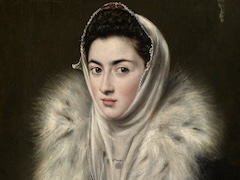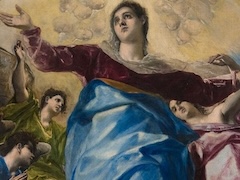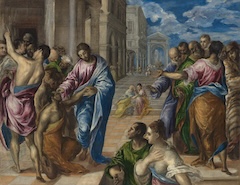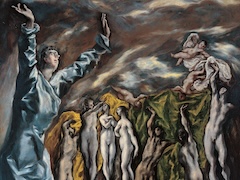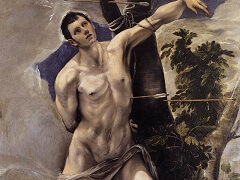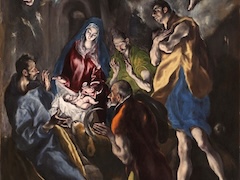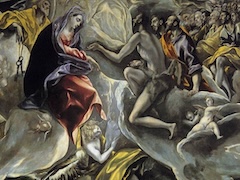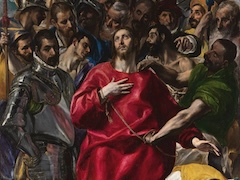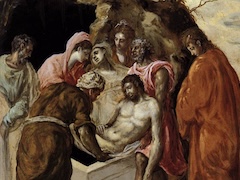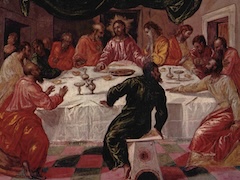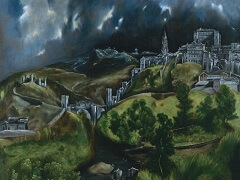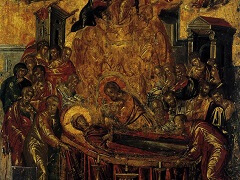A Female Portrait, 1978-81 by El Greco
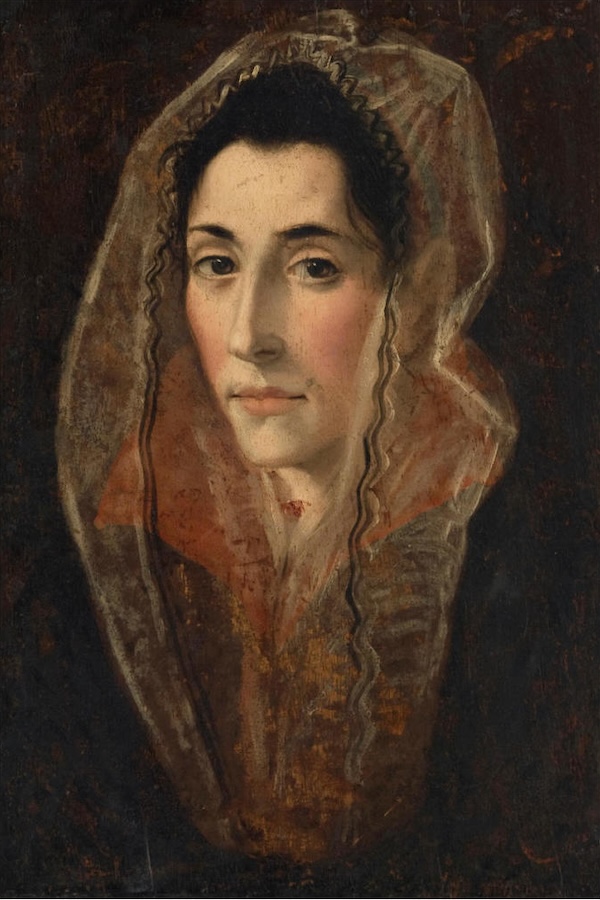
Dona Jeronima de las Cuevas, El Greco's mysterious life companion - is this her portrait?
With colors to paint joy, flowers, jewels, early youth (here, the enamel - like radiance of the skin; the transparency of the modeling shadows; the luster of green and purple seen through the veil, the Cretan veil; the all-orange hue, suggestive of petals and gold) - and with a brush so fine and precise (details of the lips, the eyelids, the nostril) as to remind us of a precious and festive Persian miniature, El Greco, nevertheless, had painted the melancholy of a woman's aging face.
The poetic intention of this contrast instantly lends its meaning of restrained sorrow, sweetness, and inevitability, inscribed on this still very beautiful face, to all the other elements of opposition that went into the building of this image: the luminous head and veil welded together into one elongated, irregularly outlined ovoid, and isolated completely and enigmatically from the dark background; the quiet and regular horizontality of the features of the face, enigmatically also upset, as if cut through, by the diagonal and restless planes of the veil.
Even the great divergence in the dating of this work by Cossio and Mayer (a divergence that occurs with regard to several others, equally puzzling, of El Greco's creations) adds its note of perplexity to the enigma of this portrait.
However, one should suggest here that stylistically the earlier date, 1578-81, is more acceptable. The jewel-like aspect of the color presentation and a certain linearity in the structure of the shapes evoke Greco's earlier works, even the works of his Italian period.
But then, if one accepts that date, could this aging woman be the beloved companion of El Greco?

